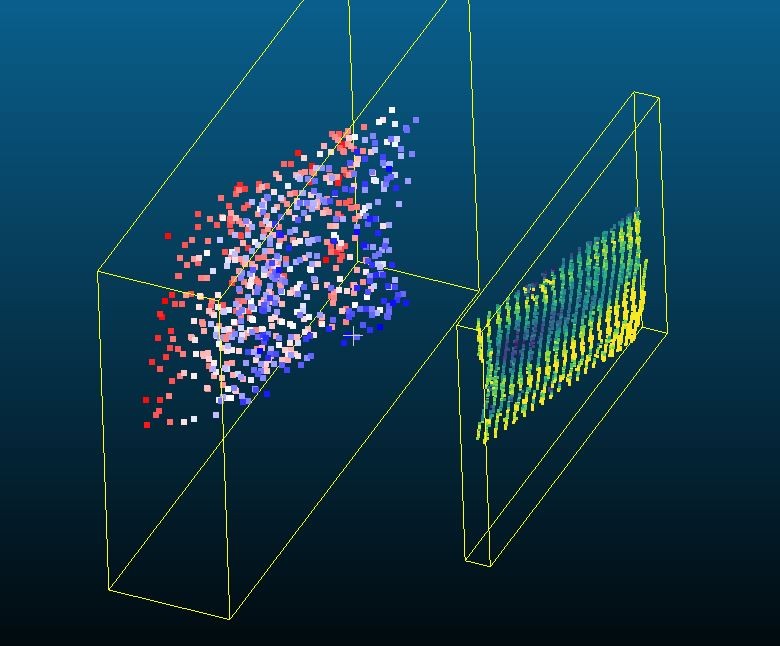How many types of LiDAR?
Author: Neuvition, IncRelease time:2021-03-06 05:01:07
LIDAR is mainly divided into: mechanical LiDAR, solid-state LiDAR, MEMS LiDAR, Flash area array LiDAR, OPA solid-state LiDAR, hybrid solid-state LIDAR…How much do you know about so many kinds of LIDAR?
LiDAR is a radar system that detects the position and velocity of a target by emitting laser beams. The laser band is located at 0.5μm-10μm, using photoelectric detectors as receiving devices and optical telescopes as antennas.
Because of the short laser wavelength and high collimation, the laser radar has excellent performance: high angular resolution and range resolution, strong anti-interference ability, can obtain multiple target image information (depth, reflectivity, etc.), small size, light in mass.
At present, LiDAR is widely used in surveying and mapping, weather monitoring, security, automatic driving and other fields. And most people believe that LiDAR is an indispensable key sensor for autonomous driving. At present, the vehicle-mounted LiDARs available on the market are basically mechanical, and their typical feature is that they have mechanical parts that can rotate, such as Velodyne’s famous large flowerpot HDL64. Of course, there are also hybrid solid-state LiDARs, which do not rotate on the outside, but there are still types where the laser transmitter rotates inside.

Mechanical LiDAR
Mechanical LiDAR refers to the macroscopic rotation of its transmitting system and receiving system, that is, by continuously rotating the transmitting head, the laser with faster speed and more accurate transmission is changed from “line” to “surface”, and it is vertical. Arrange multiple laser beams in the straight direction to form multiple surfaces to achieve the purpose of dynamic scanning and dynamic receiving of information.
Take the first-generation mechanical LiDAR (HDL-64E) produced by Velodyne as an example. The vertically arranged laser transmitters emit at different angles to achieve vertical coverage. At the same time, they are driven by the high-speed rotating motor housing. Full coverage of 360 degrees of horizontal angle. Therefore, HDL-64E is always in a 360-degree rotation state during the driving of the car.
Because it has a mechanical rotating mechanism, the biggest feature of the mechanical LiDAR is that it can rotate by itself and is relatively large.
Nowadays, the mechanical LiDAR technology is relatively mature, but the price is expensive, and the possibility of mass production for the main engine factory is low; at the same time, there are optical debugging and complex assembly, long production cycle, and the reliability of mechanical rotating parts in the driving environment is not high, and it is difficult. Meet the stringent requirements of car regulations…and other shortcomings.

Hybrid solid-state LiDAR
At the CES Consumer Electronics Show in January 2016, Velodyne demonstrated the “Solid-State Hybrid Ultra Puck Auto” (Solid-State Hybrid Ultra Puck Auto), which introduced the concept of hybrid solid-state LiDAR.
When the mechanical LiDAR is working, the transmitting system and the receiving system will always rotate 360 degrees, while when the hybrid solid-state LIDAR is working, the rotation is not visible from the appearance. The ingenious thing is that the mechanical rotating parts are made smaller. And deeply hidden in the shell.
It is generally believed in the industry that hybrid solid-state LiDAR refers to the use of semiconductor “micro-motion” devices (such as MEMS scanning mirrors) to replace macro-mechanical scanners to achieve laser scanning at the radar transmitting end on a micro-scale. The MEMS scanning mirror is a silicon-based semiconductor component, which is a solid-state electronic component; however, the MEMS scanning mirror is not “secure”, and a “movable” micro-mirror is integrated inside; it can be seen that the MEMS scanning mirror is both a “solid state” And the two properties of “movement”, so it is called “mixed solid state.”
For LiDAR, the greatest value of MEMS lies in the fact that in order to achieve scanning by mechanical LIDAR, the laser transmitter must be rotated. The MEMS microelectromechanical system can directly integrate a very compact micro galvanometer on the silicon-based chip, and the rotating micro galvanometer reflects the light of the laser to realize scanning.